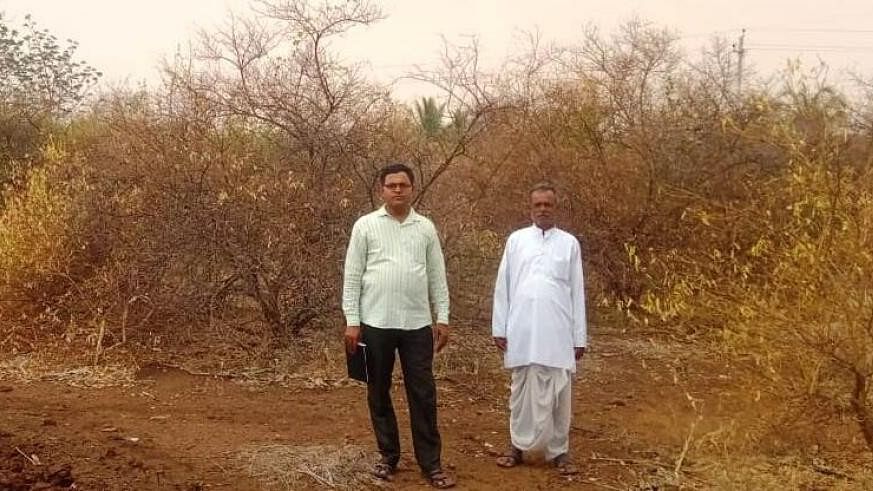
Credit: Special Arrangement
Kalaburagi: Vijayapura district, which accounts for 80 per cent of the total lemon production in Karnataka, has seen a 30 per cent decline in output over the past five years as farmers are transitioning towards crops that demand less water.
The cultivation area has seen a reduction, shrinking from 12,168 hectares in 2018-19 to 9,393 hectares in 2022-2023. During this period, lemon production also decreased from 3,04,142 metric tonnes to 2,21,923 metric tonnes. The current drought conditions have further aggravated the scenario.
Officials from the Karnataka State Lime Development Board have estimated a 70 per cent loss in lemon yields for the 2023-24 period due to the drought and have initiated the process of disbursing compensation to the affected farmers.
The Kagzi lemon variety, largely grown in Indi and other taluks of the district, has earned a Geographical Indication (GI) tag. This lemon boasts a thinner rind, abundant juice and the highest ascorbic acid content, making it highly sought after in various regions of the country and even abroad. However, the depletion of groundwater resources and insufficient government support in marketing the produce have prompted farmers to shift towards less water-intensive crops.
"Two decades ago, I had grown around 200 lemon trees on two and a half acres of land. They yielded an annual revenue of Rs 3-4 lakh after the initial four years. Now, I have axed all the trees that have withered due to water scarcity. Out of 12 borewells, only one is functional. Now I'm growing grapes, sapotas and mangoes which require only 30 per cent water compared to lemon trees," said Sangangouda Patil of Nad Kedi village in Indi taluk.
The crop switch has expanded the grape-growing area in the district from 17,000 hectares in 2018-19 to 26,000 hectares in 2022-23. Lemon trees yield 2-3 crops annually for a maximum period of 40 years. Officials say lemon trees are shallow-rooted and hence need regular water supply. But grape plants have deep roots and can maintain moisture even during water scarcity.
“We are taking steps to build farm ponds, community tanks and other water harvesting schemes as groundwater has reduced considerably. We are constructing cold storage facilities at the cost of Rs 7.5 crore and also providing subsidies to farmers. We also plan to set up processing units for preparing pickles and juice," said Rahul Kumar Bhavidoddi, Managing Director of the Karnataka State Lime Development Board.
Siddalinga Hanjagi, a farmer, said the government has to motivate them by launching new schemes. “Drip irrigation is insufficient as lemon trees need more water. Though Indi is considered to be the Land of Lemon Crop, there is no effective system to support farmers who face drought conditions annually, he added.
Hanjagi claimed that the fall in production has led to a steep rise in prices — from Rs 500 per thousand lemons to Rs 1,900 per thousand. However, board officials asserted that they would not make any intervention to check the price fluctuations.
The government has established the board with its office in Indi town to encourage the production of lemon crops. But, the production has failed to get fillip despite training and other programmes to the farmers who contend that they are deprived of canal water to the tail-end areas. Moreover, water release has been stopped from the reservoir in the rabi season last year. Therefore, they also emphasized the need to take up water harvesting schemes as underground water has receded to more than 500 feet deep in the district due to the failure of monsoon.
Despite the establishment of a board in Indi town to boost lemon production, efforts have not yielded expected results. Farmers say they lack access to canal water, especially in remote areas. The halt of water release from the reservoir during the last rabi season has worsened the situation.